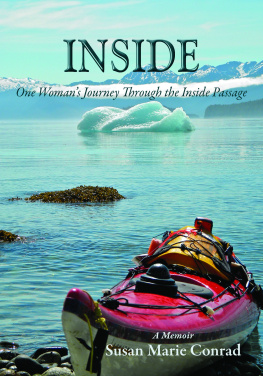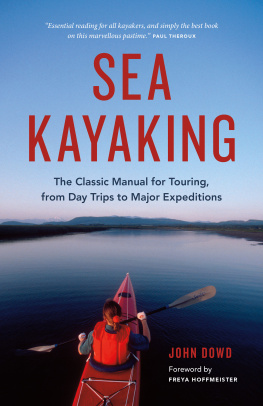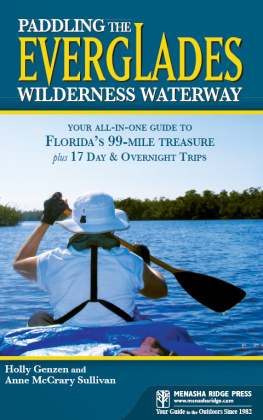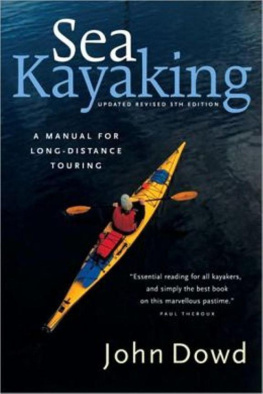Contents
Guide
Page List
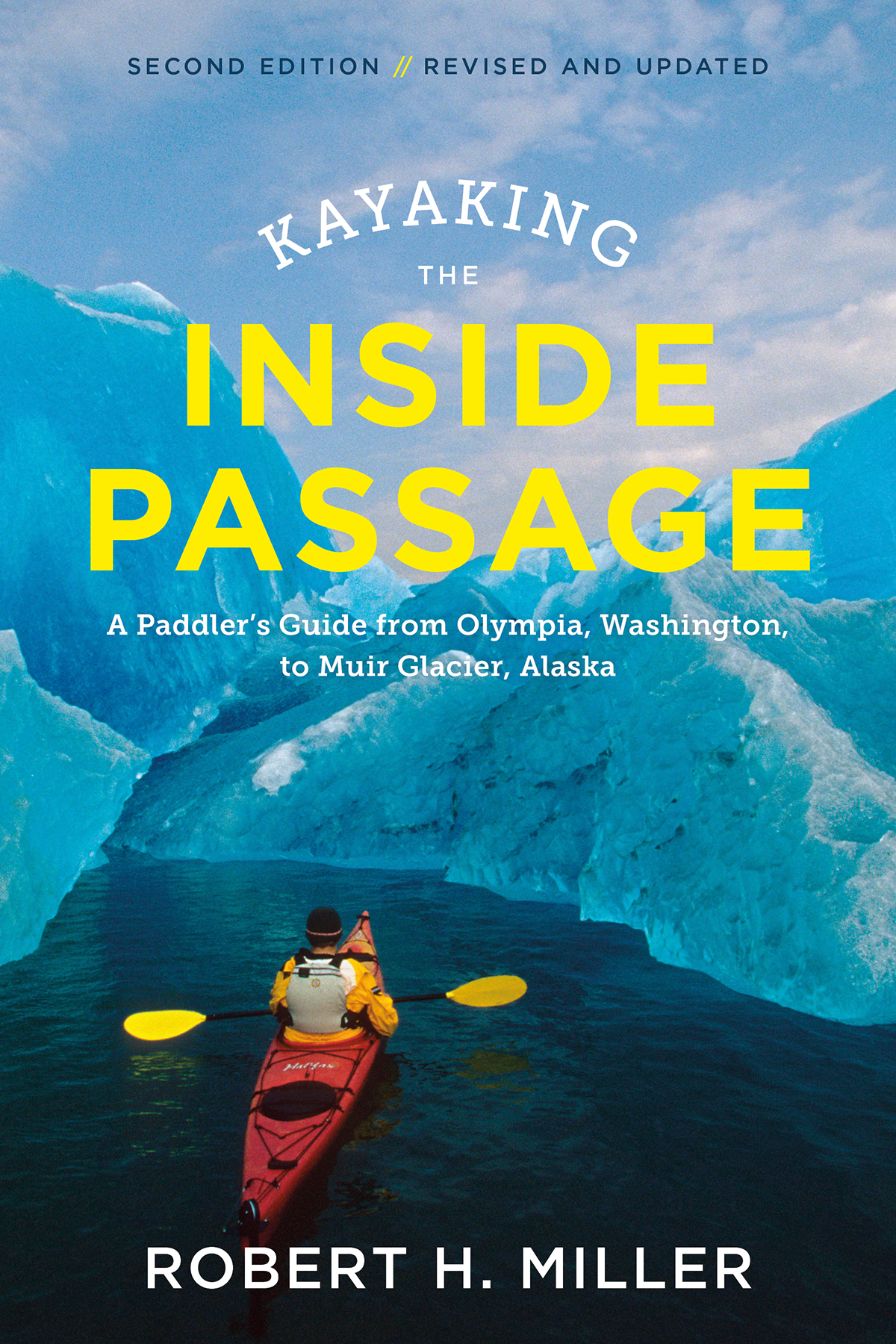
Also by Robert H. Miller
Closing the Circle: A Memoir of Cuba, Exile,
the Bay of Pigs and a Trans-Island Bike Journey

Warning
This is a guidebook for an activity that is potentially dangerous. It is not a sea kayaking instruction book and does not replace proper instruction by a qualified instructor, nor does it replace the skill, proper equipment, experience, and judgment that every sea kayaker needs.
The opinions expressed are the authors own.
For my mother, Mina; my lover, Tina; and my sister, Nani.


CONTENTS
THE BIG PICTURE
Background, Natural History, and Ethnohistory
DETAILS
Route, Weather, Navigation, Safety, and Equipment
PUGET SOUND
Olympia to Stewart Island (Roche Harbor) ( miles)
VANCOUVER ISLAND
Sidney to Port Hardy (287/ miles)
CENTRAL BRITISH COLUMBIA
Port Hardy to Prince Rupert (331/ miles)
ALASKA PANHANDLE
Prince Rupert to Juneau (382/ 1,150 miles)
NORTHERN FJORDS
Juneau to Muir Glacier, West Arm, or Skagway (130/ 1,280 , 149/ 1,299 , 95/ 1,245 )

FOREWORD
In recent years the body of literature about the Inside Passage, much like the number of people discovering sea kayaking, has increased exponentially. The objective and subjective aspects of this long-distance human effort achieve the best balance in Kayaking the Inside Passage. This select guide provides more detail dedicated to a kayakers interest than any other book to date and is the necessary companion to invite on your trip through the Inside Passage.
Like the Inside Passage itself, Robert Miller offers up moments of slap-your-head comprehension; glimpses of fin, flipper, and paddle receding into timeless mists; and a wealth of plain, rock-hard detail. This guidebook will aid kayakers in planning and carrying out trips on the rugged Pacific water artery that pulses along the western edge of North America. From the riches of the densely packed introduction to the surpriseunder the heights of the Muir Glacierfound in the final sentence, printed in words of but two syllables, theres the feel of a fine tool, sharpened by requisite data and personal experience, ready to cut a keen course of ones own.
In the first paddle strokes out of Boston Harbor at Olympia, Washington, at the southernmost end of Puget Sound, theres reference to the introduction of smallpox to the Western Hemisphere by a Cuban slave in 1520; George Vancouvers population estimates; the 1814 Treaty of Ghent; a discussion of bridge construction vis--vis underwater topography; and the geographic distribution of red-barked madrona treesall this on the first 6 miles northward on the Cascadia Marine Trails 150-mile portion of the 1,200-plus-mile-long Inside Passage. Two harbor seals tail along for the discourse.
Miller was first bitten by the Inside Passage in 1973 on the way to a Denali climb. More than 20 years laterprobably highly infectious and with his wife catching the fever to go north as wellhe was journeying by kayak. You may, as I did, get a case of Inside Passage fever reading this book. To fully enjoy this siren song of the Northwest, surround yourself with maps, charts, tide tables, and a dictionary, at least, to take the place of raven and eagle, bear and whale, cedar, cliff, and sand. Whether this book is a short reach from a living room armchair or drybagged on a kayak deck, the pull of powerful currents lies within its covers.
Kayaking the Inside Passage is an excellent compendium, achieving an expert pilots trim. The Inner Passage cannot be traveled without an awareness of historic human use and misuse of coastal and inland resources; the shaping power of the aquatic and land mammals topping their food chains; the geological and meteorological forces constantly at work; or the challenges of ones life. Reading and learning from this book are the first strokes of an Inside Passage adventure.

still life with slug
BY REED WAITE, Executive Director
Washington Water Trails Association & Cascadia Marine Trail

PREFACE: HOW THIS BOOK CAME TO BE
Number of strokes required to paddle
the Inside Passage: 1,440,000
You should write a guidebook, Tina, my wife and paddling companion, suggested.
Paddlinglike walkingstimulates the imagination, loosens the tongue, and invariably generates creative conversation. On this morning wed already exhausted practical topicsthe days objective, course and strategy, even what to have for dinnerand had tired of our well-worn stock of more imaginative themes: our dreams and aspirations, relationships and old gossip, public policy and architecture.
No, I automatically retorted.
Tina answers every proposal with a no, and Id acquired the odd habit. Not that we actually mean no. It probably started out as a protective adaptation to growing up in a large, contentious family. Now its instinctive and seems to be just a displacement response to gain time to contemplate whatever had just been suggested. Every two or three days between Olympia, Washington, and Prince Rupert, British Columbia, the topic would resurface. As the full impact and magnificence of this most wonderful of adventures sank in, the idea of a guidebook grew from a modest, practical application of our research and experience to a celebration of the journey of a lifetime.
I should write a guidebook, I declared one day.
Great idea, Tina concurred.

Why write a guide? In a word, because I wish Id had a comprehensive guide before undertaking my own Inside Passage trip. My own research, though extensive, time-consuming, and in-depth, was often unfocused or unproductive. Much of it I did not retainit was too unmanageable and meant little without a sense of place. Moreover, a glance at a contiguous Inside Passage map will quickly overwhelm even a systems analyst. The complexity of landmasses and water passages rivals a Pollock painting. In order to chart a dependable route, navigational guides and maps require not only a thorough study and integration before embarkation but also comprehensive editing for on-board pilotage. A full set of topo maps; charts in varying scales; specialty maps (such as Forest Service and special interest maps); Sailing Directions, Pilots, and Coast Pilot books; small-craft and kayaking guides; tide tables; and other essentials are an unwieldy bunch to stow and grapple with in camp on a daily basis, much less on the water. Daily navigation prepping is very time-consuming. Finally, add bird, fish, plant, invertebrate, mammal, historical, and various other interpretive guides along with more general resource materials to the lot, and I was pressed to find room for extras such as tent, food, or sleeping bag.





